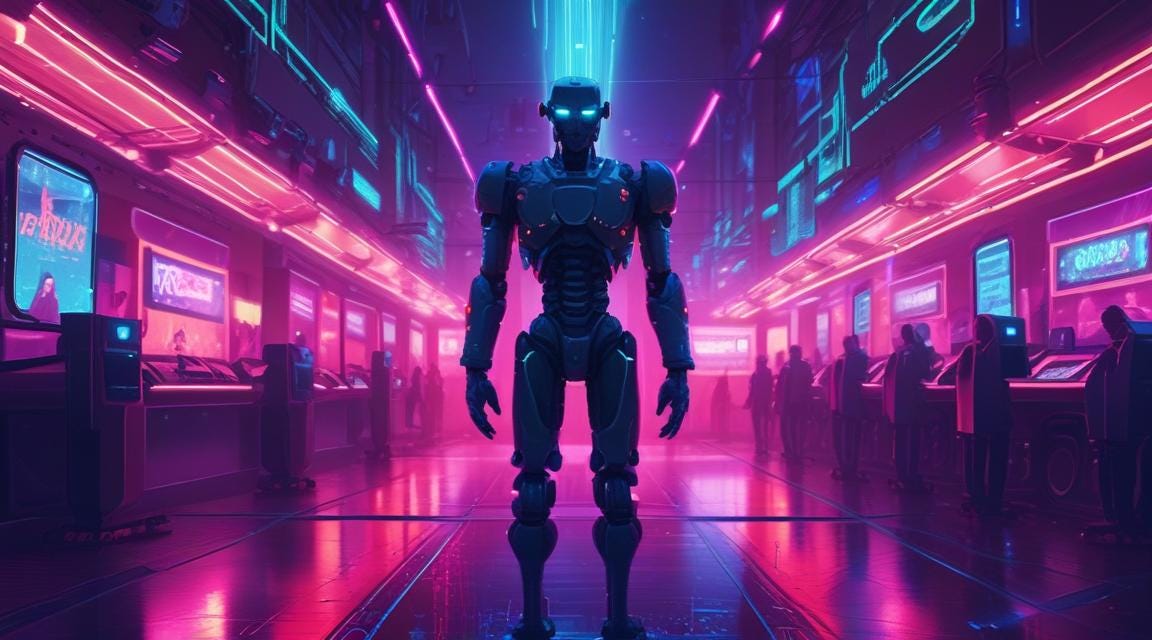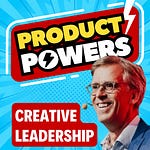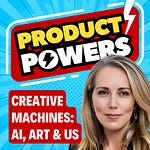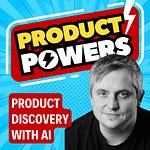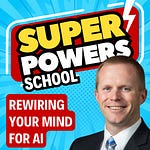How Henrik Kniberg Created the Generative AI in a Nutshell Video
This episode was recorded during a recent Visual Jam Meetup event with special guest Henrik Kniberg. We delve deep into the fusion of creativity, technology, and visual storytelling.
My superpower is the ability to take complicated things and explain them in a simple way
— Henrik Kniberg
Henrik Kniberg's Background
🌅 Early Life in Tokyo
Henrik Kniberg, an influential voice in the agile community, spent his early years in the bustling city of Tokyo. This vibrant environment fostered his curiosity and set the stage for his future endeavours.
🏫 Education and Career Beginnings
From an early age, Henrik's interests were split between music and computers. He eventually pivoted towards programming and pursued computer science at the Royal Institute of Technology in Stockholm, Sweden. Here, during the dot-com boom, he transitioned from a programmer to an entrepreneur.
🎸 Transition from Music to Programming
Initially aspiring to be a musician, Henrik later decided to keep music as a hobby and pursued a career in programming. This balance between his artistic passion and technical skills would become a hallmark of his career.
Early Career Experiences
🚀 Involvement in Startups During the Dot-com Boom
Henrik immersed himself in the whirlwind of the dot-com boom. He worked in several startups, where he transitioned from being a programmer to an entrepreneur and eventually took on managerial roles.
🧑💼 Transition from Programmer to Entrepreneur to Manager
As startups he worked with grew, Henrik's roles expanded, demanding a comprehensive understanding of product development from multiple perspectives.
Spotify Experience
🏢 Early Days of Spotify
Henrik joined Spotify during its nascent phase. With an agile mindset right from the start, Spotify embodied the principles of speed and innovation.
🌐 Agile Mindset from the Beginning
At Spotify, the agile approach was embedded deeply within the company culture, eliminating the need for Henrik to push for agile transformations. His role evolved into helping the company scale as it grew.
Spotify's Competitive Edge
🎧 Streaming Music vs Owning Music Concept
Spotify's revolutionary concept of streaming music, rather than owning, was initially met with scepticism. Undeterred, the company persevered and disrupted the entire industry.
⚡️ Culture Optimized for Speed of Innovation
Spotify's competitive edge was its culture, which prioritized rapid iteration and innovation. This agile ethos allowed them to outpace larger competitors with more resources.
Transition to Lego
🧩 Lego's Openness to Change
Henrik's transition to Lego was a shift from software-centric work to a broader range of product design and manufacturing processes. Despite being a traditionally conservative company, Lego was surprisingly open to change.
🔄 Applying Agile Thinking to Non-software Processes
At Lego, Henrik applied agile methodologies beyond software, influencing the physical product design process and the operations of the factory floor.
Key Learnings from Lego
🧒 Importance of User Involvement in Design Process
One of Henrik's major takeaways was Lego's unwavering commitment to user testing. Designers with decades of experience still tested their models early with actual users—primarily kids.
🎨 Humility in Experienced Designers
Lego's culture of continuous user feedback and humility among seasoned designers highlighted the importance of staying adaptable and responsive to user needs.
Minecraft Contributions
🌄 Role in Terrain Generation
Henrik played a pivotal role in transforming Minecraft's terrain generation. His work completely revamped the game's cave and mountain designs, enriching the user experience.
🧑🌾 Creating Villager Children Behaviours
One of his initial contributions was giving villager children activities, such as playing and jumping on beds, adding a new layer of life to the game.
Future of Tech and Product Development
🧠 Pivot Towards AI
Henrik's recent pivot has been towards harnessing AI, exploring how it can be integrated into product development and everyday work.
🤝 AI as a Colleague in Day-to-day Work
Viewing AI as a digital colleague is central to Henrik's vision. AI can enhance productivity by working alongside humans, not replacing them.
Current AI Projects
📺 Swedish TV Documentary on Generative AI
Henrik and his team recently contributed to a Swedish TV documentary, focusing on generative AI and developing autonomous AI agents.
📰 Building Autonomous AI Agents
A standout project involved creating a digital journalist to collaborate with human journalists, showcasing the potential of AI in creative fields.
AI and Human Collaboration
🎇 AI Plus Human as the Key to Success
Henrik stresses that the true magic lies in the symbiosis of AI and humans working together, unlocking unprecedented capabilities.
👥 Smaller, More Numerous Teams with AI Support
He also predicts a future where teams become smaller but more numerous, each augmented with an AI companion to enhance efficiency.
Visual Explanation Techniques
✍️ Using Visuals to Simplify Complex Concepts
Henrik's ability to distil complex ideas into simple, engaging visuals has set him apart. His drawings make intricate subjects accessible to a wider audience.
📊 Examples of Visual Explanations
Graphics like the Spotify model and MVP explanations are famous examples that demonstrate his talent in visual storytelling.
Process of Creating Visual Explanations
🗒️ Starting with Whiteboard Sketches
Every great drawing of Henrik begins as a rough whiteboard sketch. This initial stage is critical for organising thoughts and clarifying concepts.
📝 Refining and Polishing for Articles and Videos
After sketching, these visuals are refined and polished for broader dissemination, ensuring clarity and engagement.
Spotify Engineering Culture Video
🎥 Live Drawing Video Format
Henrik's "Spotify Engineering Culture" video, a standout piece, uses live drawing to explain the company's agile practices.
⚖️ Explaining the Concept of Minimum Viable Bureaucracy
This video effectively illustrates the balance between chaos and bureaucracy, coining the term "minimum viable bureaucracy".
Creating Engaging Visuals
👩🎤 Using Characters or Protagonists in Explanations
Henrik often uses characters as focal points in his visuals, making the content more relatable and engaging.
⚙️ Balancing Simplicity and Depth in Visuals
Henrik skillfully balances simplicity and depth, ensuring his visuals are easy to understand yet rich in information.
Video Creation Process
🎬 Starting with PowerPoint for Initial Planning
Surprisingly, the starting point for Henrik's videos is often a simple PowerPoint presentation, mapping out the key points and visuals.
🧩 Dividing Content into Chapters
The content is then divided into chapters, each segment fine-tuned for clarity and flow.
📝 Iterative Script Writing and Refinement
Henrik's script is meticulously crafted and iterated upon, condensing each concept to its essence.
Script Optimization Techniques
🔎 Condensing Content to Essentials
The focus is on condensing content to its bare essentials to keep videos concise and impactful.
⏳ Calculating Words per Second for Timing
Henrik uses a precise calculation of words per second to ensure the video maintains a steady, engaging pace.
🚦 Using Constraints to Keep Videos Concise
Strict constraints on length help maintain viewer engagement and convey the message efficiently.
Visual Planning
🖊️ Drafting Rough Visuals for Each Section
Rough drafts of visuals are created for each section, allowing Henrik to test and refine his ideas.
🧮 Using Metaphors to Explain Concepts
Henrik frequently uses metaphors—like a calculator to explain old computers—to make complex ideas relatable.
Leveraging AI in Content Creation
🤖 Using GPT-4 for Script Refinement
Henrik leverages GPT-4 to refine his scripts, ensuring a balance between simplicity and depth.
⚖️ Balancing Simplicity and Depth for Diverse Audiences
The goal is to create content that appeals to both newcomers and experienced professionals.
Video Recording and Editing
🎙️ One-take Recording with Small Stops
Henrik often records his videos in one go, with minimal stops to maintain a natural flow.
✂️ Editing for Conciseness and Flow
Editing focuses on removing unnecessary content, ensuring the final product is concise and fluid.
Drawing Process
🎨 Using ArtRage Software and Wacom Drawing Tablet
Henrik prefers using ArtRage software and a Wacom drawing tablet for his illustrations.
🔄 Iterating on Visual Layout and Timing
Visual elements are iterated upon to ensure they align with the video's timing and flow.
Time Investment in Video Creation
⏱️ Approximately 2 Hours per Minute of Final Video
Henrik's videos are a labour of love, with around 2 hours of work invested per minute of finished content.
🕒 Total of About 60 Hours per Video
Creating a single video can take up to 60 hours, reflecting the meticulous effort involved.
Factors Contributing to Video Virality
💡 Well-thought-out Content from Extensive Experience
Henrik's extensive experience and well-thought-out content form the core of his videos' success.
🖋️ Physical Drawing Process Engaging Viewers
The physical act of drawing captivates viewers, making the learning experience more engaging.
📈 Visual Metaphors Appealing to Human Nature
Henrik's use of visual metaphors resonates with viewers on a fundamental level, contributing to the video's virality.
Impact of Videos on Training
🏫 Using Videos to Set the Scene in Agile Training Courses
Henrik's videos are frequently used in training sessions to set the stage and convey key concepts.
☕ Saving Time by Covering Main Concepts Efficiently
By covering key ideas concisely, these videos save significant time for trainers and learners alike.
Origins of Visual Thinking Approach
✏️ Early Doodling Habits in School
Henrik's penchant for doodling began in school, where his notebooks were filled with caricatures and sketches.
🎲 Applying Drawing Skills to Role-playing Games
His role-playing game sessions were enriched with drawings, adding depth to the storytelling experience.
Visual Thinking in Professional Settings
🛠️ Using Whiteboards to Align Teams
In professional settings, Henrik uses whiteboards to clarify thoughts and align teams, enhancing collaboration.
🎥 Enhancing Engagement and Understanding Through Visuals
Visuals significantly improve engagement and understanding, making complex concepts more accessible.
Evolution of Product Ownership Explanation
🔄 Iterating on Visual Explanations in Workshops
Henrik's visual explanations evolved through workshops, where he tested and refined his ideas.
💡 Birth of the Product Ownership Video Concept
The concept for the product ownership video emerged from these iterative workshops, eventually becoming a viral hit.
Tools Used for Video Creation
💾 ScreenFlow for Recording and Editing
Henrik uses ScreenFlow for recording and editing his videos, finding it highly effective despite experimenting with other tools.
🖌️ ArtRage for Drawing
ArtRage is Henrik's tool of choice for drawing, allowing him to create engaging and informative visuals.
Tips for Using ArtRage
✏️ Changing Cursor to Pen or Brush View
A simple tip: pressing '3' in ArtRage changes the cursor to a pen or brush view, enhancing the drawing experience.
🖍️ Using Layers for Figures and Background
Henrik uses layers to organise his drawings, with separate layers for figures and backgrounds.
AI Tools in Training and Content Creation
🖼️ Using AI for Image Generation and Content Iteration
AI tools like GPT-4 assist in content iteration and image generation, making the creation process more efficient.
🤖 Creating Chat Bots to Support Clients
Henrik is exploring the creation of chat bots to provide preliminary support to clients, enhancing service delivery.
Experimenting with GPTs
🧠 Fresh Start GPT for Brainstorming and Advice
Henrik developed a GPT called "Fresh Start", designed to help users brainstorm and provide advice.
Embracing AI in Visual Creation
🌐 Viewing AI as a Tool for Enhancing Capabilities
Henrik views AI as a tool that augments human capabilities, offering superpowers in content creation and visual thinking.
🤯 Potential Future Uses of AI in Visual Content Creation
The future may see AI generating visuals in Henrik's unique style, further revolutionising the field.
Importance of Adapting to New Technologies
🛠️ Embracing AI Tools as "Superpowers"
Henrik advocates for embracing new technologies like AI, viewing them as tools that offer unprecedented capabilities.
🚀 Learning to Use New Tools Rather Than Resisting Change
Rather than resisting technological advancements, Henrik encourages learning to use new tools to stay ahead.
Future of Visual Thinking with AI
🎯 AI Augmenting Rather Than Replacing Visual Thinking
Henrik believes AI will augment, not replace, visual thinking techniques, enhancing creativity and effectiveness.
🖌️ Potential for AI to Generate Visuals in Personal Style
The potential for AI to create visuals in an individual's style opens exciting possibilities for the future of visual thinking.
Key Takeaways for Visual Thinkers
🧩 Importance of Simplifying Complex Concepts
Henrik highlights the importance of breaking down complex ideas into simple, digestible visuals.
🔄 Value of Iterative Refinement in Explanations
Iterative refinement is crucial in creating effective visual explanations, ensuring clarity and engagement.
🤝 Potential of Combining Human Creativity with AI Tools
The synergy between human creativity and AI tools offers a promising future for content creation and visual thinking.
FAQs
What software does Henrik Kniberg use for his drawings?
Henrik uses ArtRage for drawing and ScreenFlow for recording and editing.
How long does it take Henrik Kniberg to create a single video?
Creating a single video can take up to 60 hours in total, with around 2 hours invested per minute of finished content.
What is the essence of Henrik Kniberg's visual storytelling style?
Henrik's style focuses on simplifying complex concepts using engaging visual metaphors and iterative refinement.
What role does AI play in Henrik Kniberg's content creation process?
Henrik leverages AI tools like GPT-4 for script refinement and content iteration, viewing AI as an enhancement to human capabilities.
Henrik Kniberg
Henrik Kniberg is Chief Scientist and cofounder of Hups.com and Flitig.ai, and consultant at Crisp. Henrik’s focus is the practical application of Generative AI in product development and other areas. He explores the frontiers of this technology, builds AI-powered products, and teaches courses and workshops on how to use this technology effectively. He made the video ”Generative AI in a Nutshell” and wrote the articles ”Are developers needed in the Age of AI” and ”WhoDunit – Ai product development on steroids”.
Henrik’s background is Minecraft gameplay design & development at Mojang, and agile/lean coaching at LEGO and Spotify and other product companies.
Henrik is well-known for his books ”Scrum and XP from the Trenches” and ”Kanban and Scrum, making the most of both” and ”Lean from the Trenches”. He is also well-known for viral videos such as ”Agile Product Ownership in a Nutshell” and ”Spotify Engineering Culture” (commonly referred to as the Spotify Model), and silly metaphors like the skateboard metaphor for product development, and ping pong balls to demonstrate the concept of flow. Henrik has also been engaged in climate change – he created the video Friendly Guide to Climate Change and cofounded GoClimate.com.


